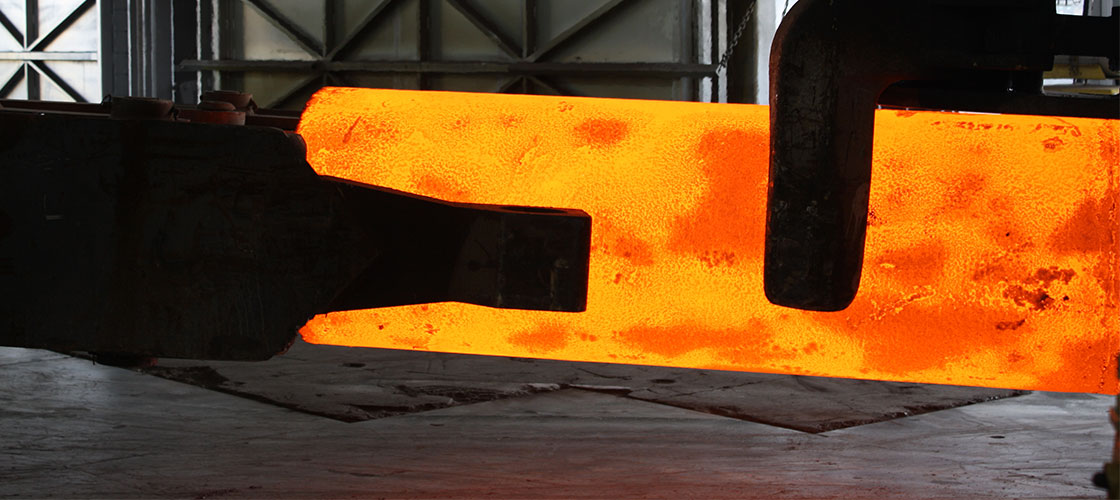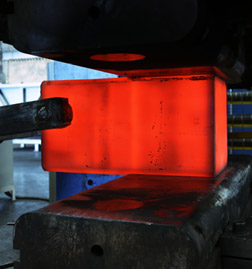
Different products require different metal working processes.

American Handforge provides open die forgings, special shape or bent forgings, and forged rings. Depending on your product needs and specifications, we are happy to work with you in finding your solution.
Forgings and special cut forgings, American Handforge can process your material in a way that will optimize the performance characteristics. Whether cold work, cross-grain, hot forge, upset, upset & cross-grain or warm work, talk to us about which method will work best for you.
Forging Techniques
Cold Working (FIA) — Permanent plastic deformation of a metal at a temperature below its recrystallization point—low enough to produce strain hardening. Usually, but not necessarily, conducted at room temperature. Also referred to as cold forming or cold forging. Contrast with hot working.
Cold Stamp (CDA) — To restrike a forging cold in order to hold to closer tolerance, sharpen corners or outlines, reduce section thickness, flatten some particular surface, increase hardness, or add lettering.
Cross Forging (FIA) — Preliminary working of forging stock in alternate planes, usually on flat dies, to develop mechanical properties, particularly in the center portions of heavy sections.
Hot Forging (FIA) — Same as hot working—plastically deforming an alloy at a temperature above its recrystallization point, i.e., high enough to avoid strain hardening.
Hot Press Forging (CDA) — A method of forming parts by pressing a heated slug, cut from wrought material, in a closed–impression die.
Upset & Cross-Grain Forge — This method of forging is a combination of Cross-Grain forging in that the work is done on alternate plains, but also as in Upset Forging it is used to increase the cross-sectional area of a portion or all of the stock.
Upset Forging (FIA) — (1) A forging made by upsetting an appropriate length of bar, billet or bloom. (2) Working metal to increase the cross-sectional area of a portion or all of the stock. (3) A forging formed by heading or gathering the material by pressure upon hot or cold metal between dies operated in a horizontal plane. This method is not used as frequently for copper alloys as it is for steels for example due to the ability of copper to be easily extruded.
Warm Forging (FIA) — Deformation at elevated temperatures below the recrystallization temperature. The flow stress and rate of strain hardening are reduced with increasing temperature; thus, lower forces are required than in cold working. For steel, the temperatures range from about 1000° F to just below the normal hot working range of 1900 to 2300° F.
It's important when designing new product or redesigning existing product that you select the process that will deliver the right material properties for you. Our vast forging capacity means American Handforge can handle your work, whether it's an order of 1000 or one.